Humintas, a Bolivian delicacy made from fresh corn, ground in a batán (a stone hand-mill), flavored with anise seeds and filled with cheese.
Grab your coffee and come to Bolivia for a merienda (snack time) and enjoy this steamed huminta or Bolivian tamales made with fresh corn.
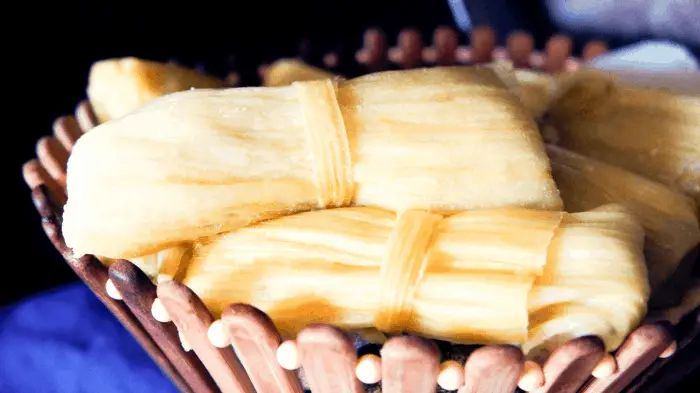
The word huminta is derived from a Quechua word humint’a which in Spanish means curves or waist. The name comes from the way they are tied.
Corn is known as one of the main foods of the peoples of Indo-America.
Corn was used in a diversity of foods, many of which had the characteristic of being served in a wrapper made with the leaves of the same plant.
The humita or huminta, is a traditional food of Andean America, and has a pre-Columbian history that we can find at the origin of the Inca empire.
The humintas are also known as humitas, chumales, choclotandas, corn tamales, wrapped, cob buns, pamonha in different parts of Latin America.
The preparation varies a bit from country to country, with different fillings, some sweet and others savory.
Bolivian Huminta
During December, January and February corn abound in Bolivia, especially in the valley.
In the markets, you start to see steamed humintas, baked humintas, and corn soups.
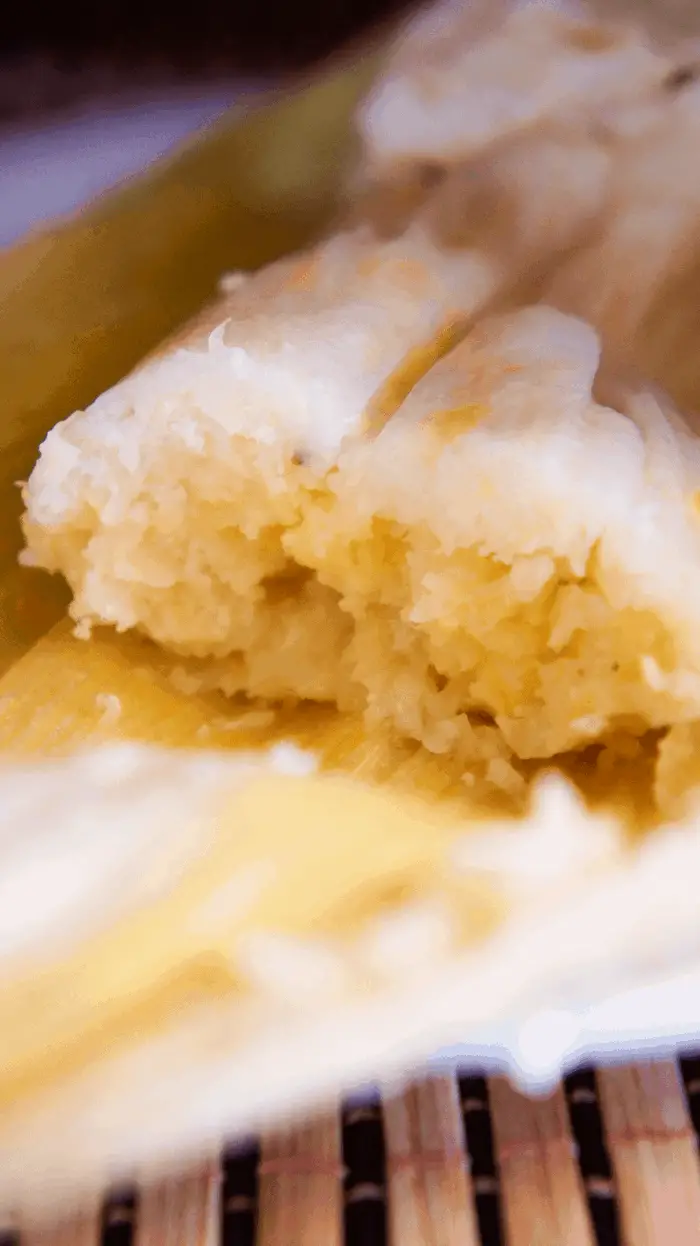
The department of Tarija is known for its humintas. In recent years, they started having an Huminta Fair every February.
In their streets, you can find 3 kinds of huminta, although the batter is the same, the way you cook it gives it a different flavor. You can find them steamed (a la olla), baked, and roasted (cooked on a stone).
Bolivian corn is creamy, large-grained, and white in color. Unlike the corn that can be bought in supermarkets of an intense yellow color.
The ear is smaller, about 15 to 20 cm long and about 6 to 8 cm in diameter.
How to make it
I recommend you make this recipe with friends or other family members. It takes a little bit of time to make, so it goes faster if you do it with other people.
Start by peeling the corn very carefully. Trying not to break the leaves because you need them to cook the huminta.
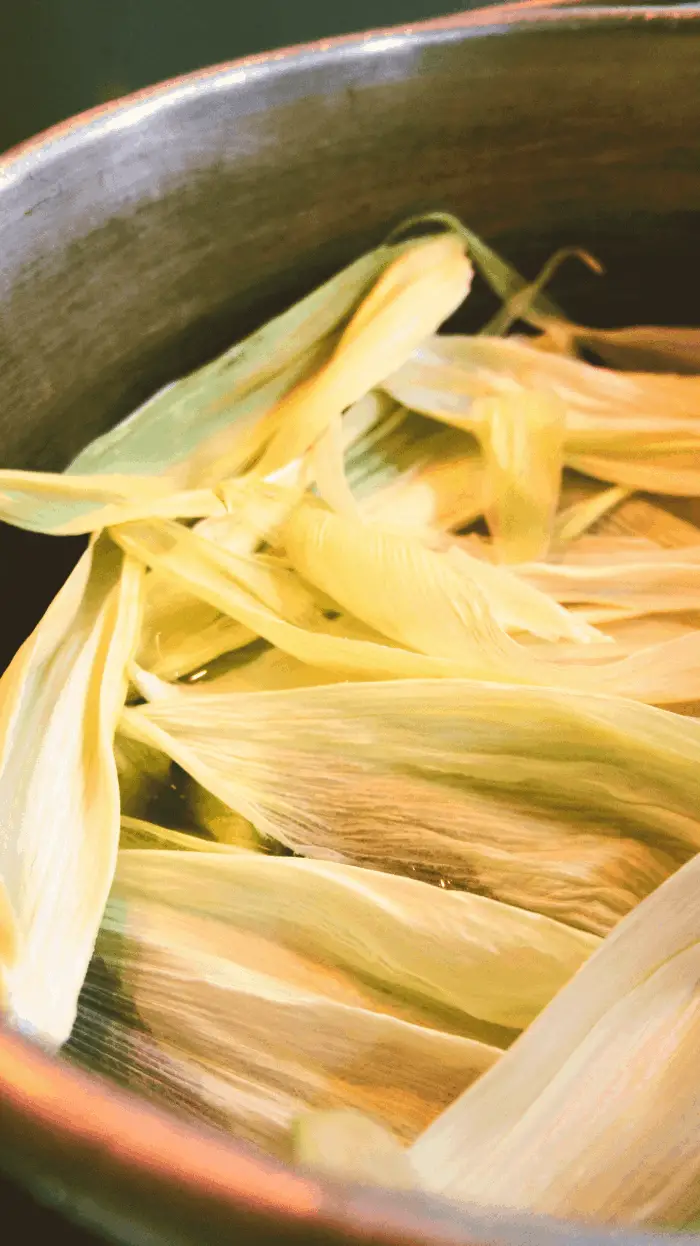
If you want to do this step the day before, you can keep the leaves or chalas in a bag, and the next day put them in hot water so that they are more malleable and it is easy to assemble the huminta.
After peeling the corn, you need to shell it by hand (if you're in a hurry, you can use a knife).
Grind the corn and mix it with the rest of the ingredients until you have a thick paste.
To wrap the huminta, choose the largest leaves and place the tips towards the center leaving a few inches to give the batter some room.
Fold the sides towards the center and finally tie with a strip of the leaf and adjust so that the batter doesn't escape.
It takes a little bit of practice to do this step, just keep practicing, you'll get it!
Prepare a pot with the cobs and fill it with water. Once it boils, you can place the humintas and cook them.
These Bolivian humintas are served with coffee for breakfast, or an afternoon snack.
Recipe and photography from Fernanda Quiroz. Follow her on Uslero Bakery.

Fernanda Quiroz Barba is from Santa Cruz, Bolivia. She has a degree in graphic design, co-owner of the creative studio Cereal Killer, specialists in gastronomic branding.
She made a didactic board game on Bolivian gastronomy to be used as learning material in primary courses for national schools.
Owner of Uslero Bakery, a local patisserie, dedicated to fine pastries.
Tips
- If this corn is not common or you cannot find it in your country, use the one you have on hand, but after grinding it, let it rest in a colander covered with a fine kitchen towel so that the liquid can drain a little.
- Gently remove the husks or leaves for later use.
- If you don't have a batán (stone hand-mill), you can use a food processor or blender.
Frequently asked questions
Once cool, you can store them in an airtight container in the refrigerator for up to 5 days. Or you can freeze them for up to 2 months.
You can use canned or frozen corn. Remember that both are precooked. The texture of the huminta may be different and you don't need to cook it for an hour. Reduce cooking time to 30 minutes.
Bolivian cheese is dry and salty. You can substitute for some similar cheese.
Recipes you might like:
If you liked the recipe above, please consider rating the recipe and leaving a comment below! and share your picture on Instagram with the hashtag #chipabythedozen
Recipe
Humintas (Bolivian Tamales)
Ingredients
- 4 ears of fresh corn with husk
- 50 grams butter (¼ cup)
- 2 tablespoons sugar
- 1 tablespoon salt or to taste
- 1 teaspoon of anise seeds
- 1 cup shredded cheese (Holland cheese, or queso fresco)
- Optional 1 tablespoon of ground chili
Instructions
- Carefully remove the husks from the corn and reserve them for the filling.
- Remove the hair from the corn, peel it by hand and reserve the cob for cooking.
- Grind the corn in a in a food processor. Place it in a bowl,d the sugar, salt and mix until everything is incorporated, then add the anise, melted butter and beat again until everything is incorporated. In the case that it is very liquid, the mixture can be strained a little, the consistency should be like a porridge.
- Choose the largest husks and cut the thick part of these, until it can be fully stretched, then place one on top of the other intersecting the widest parts (the largest and widest husk should go underneath and the smallest on top), place the filling in the center and grated or diced cheese on top of the mixture.
- The assembly of the Humita:
- Bring the tips of the husks towards the center leaving a few centimeters to give space to the mixture, then fold the sides towards the center and finally tie with a strip of husk as well and adjust so that the mixture does not escape.
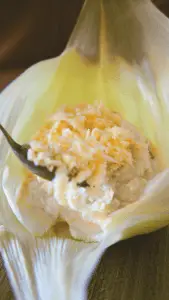
- In a pot, place the cobs, fill with water until it boils, then place the humintas in the water face up to prevent the filling from escaping, place the remaining humintas on top of the water, without introducing them and boil for 40 - 60 min.
Notes
Nutrition
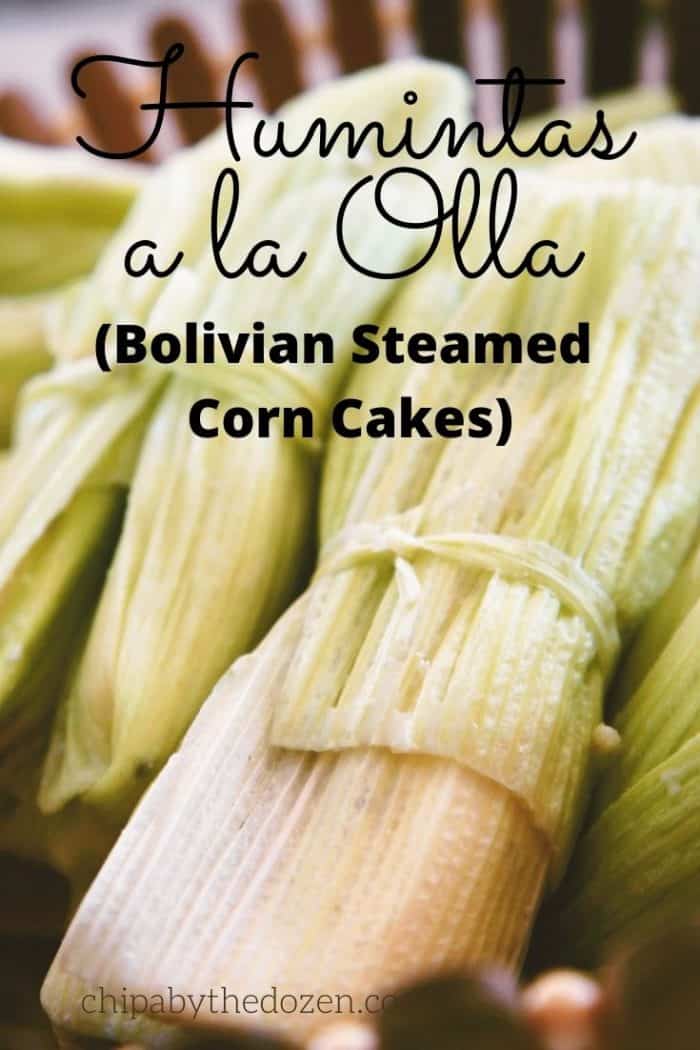

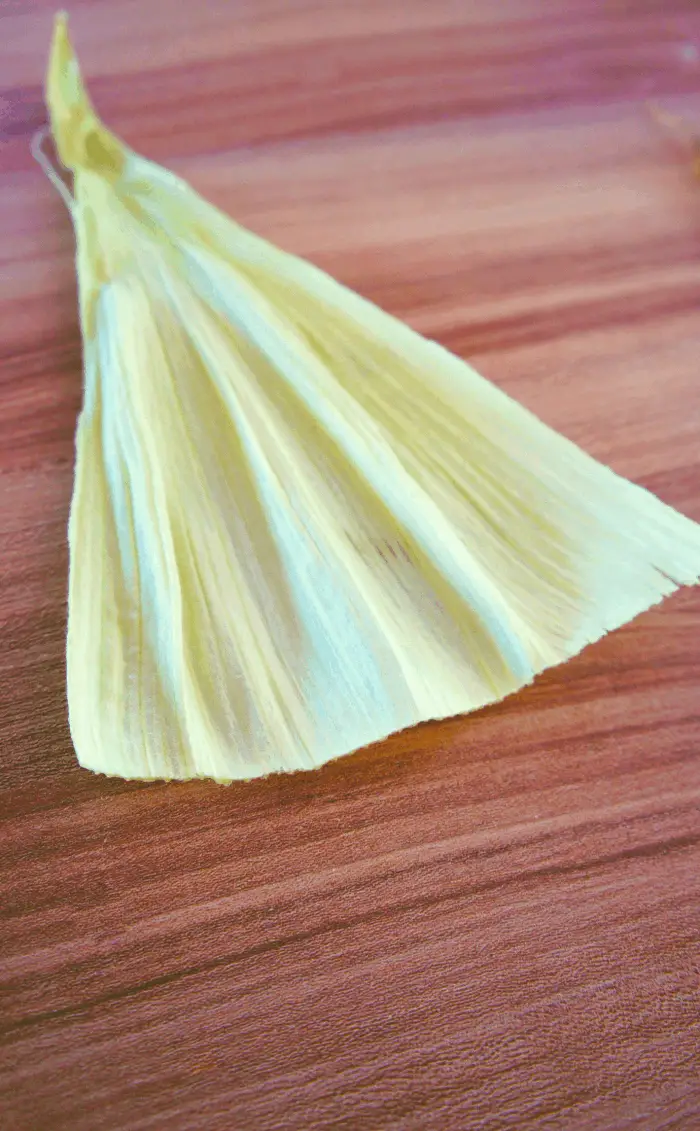
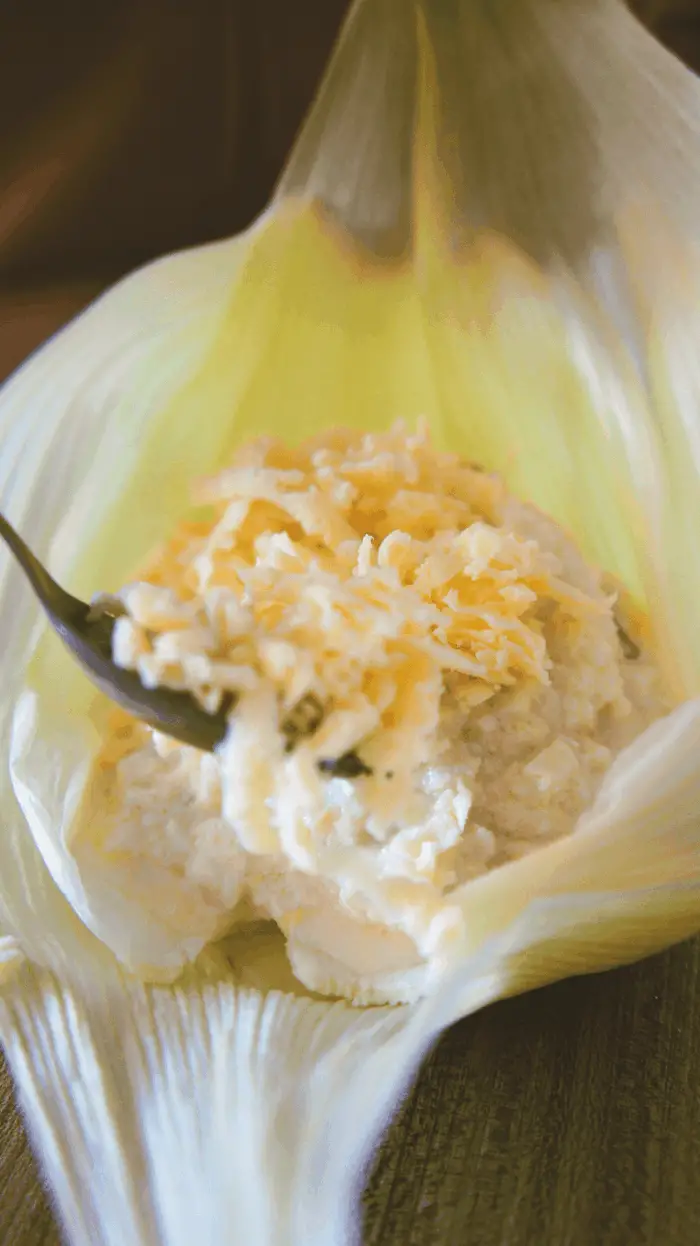
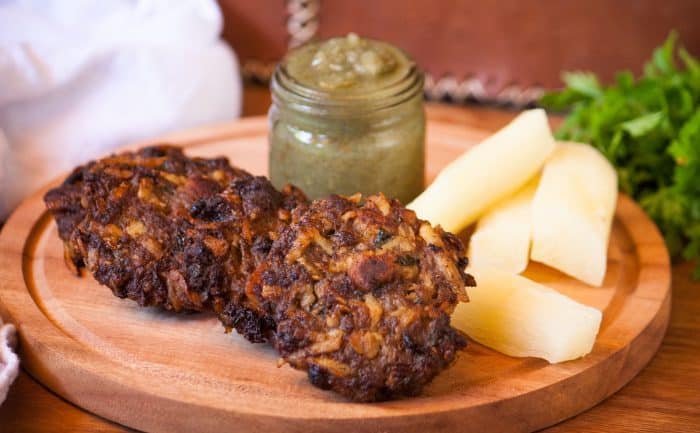
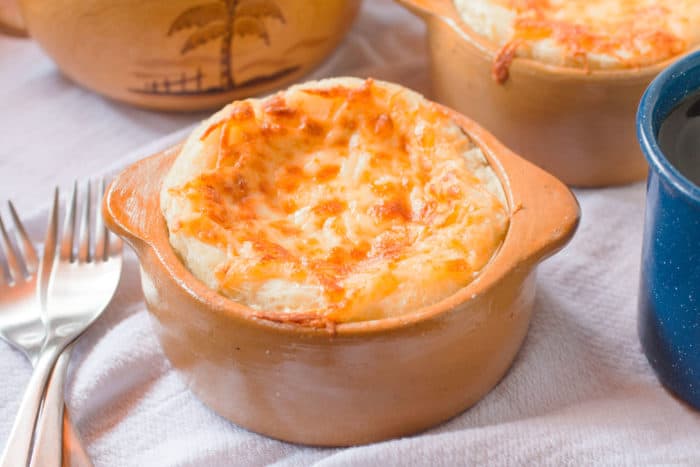
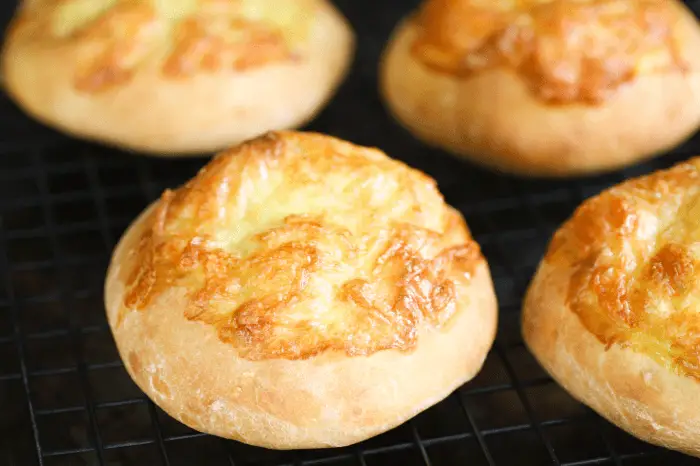
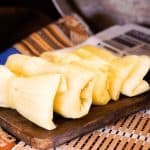
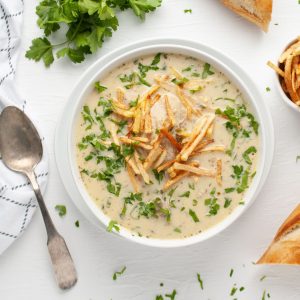
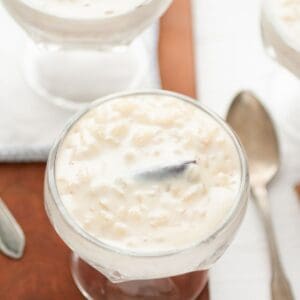
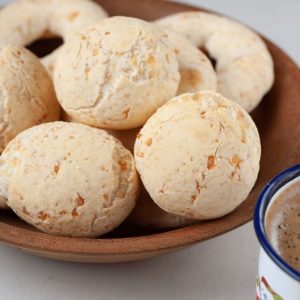
Soniya
My family loves tamales and this looks and sounds super delicious and easy to make.. definitely trying it soon.
Nicole Triebe
These couldn't be easier to make and they were so delicious! Such a great dinner idea!
Katherine
These tamales look incredible. I love the idea of the anise seeds for extra flavor.
Sue
Oooo these Bolivian Tamales look so good!!
Pam Greer
My daughters are coming for a visit this weekend and we were looking for a new cooking project! I can't wait to try these!